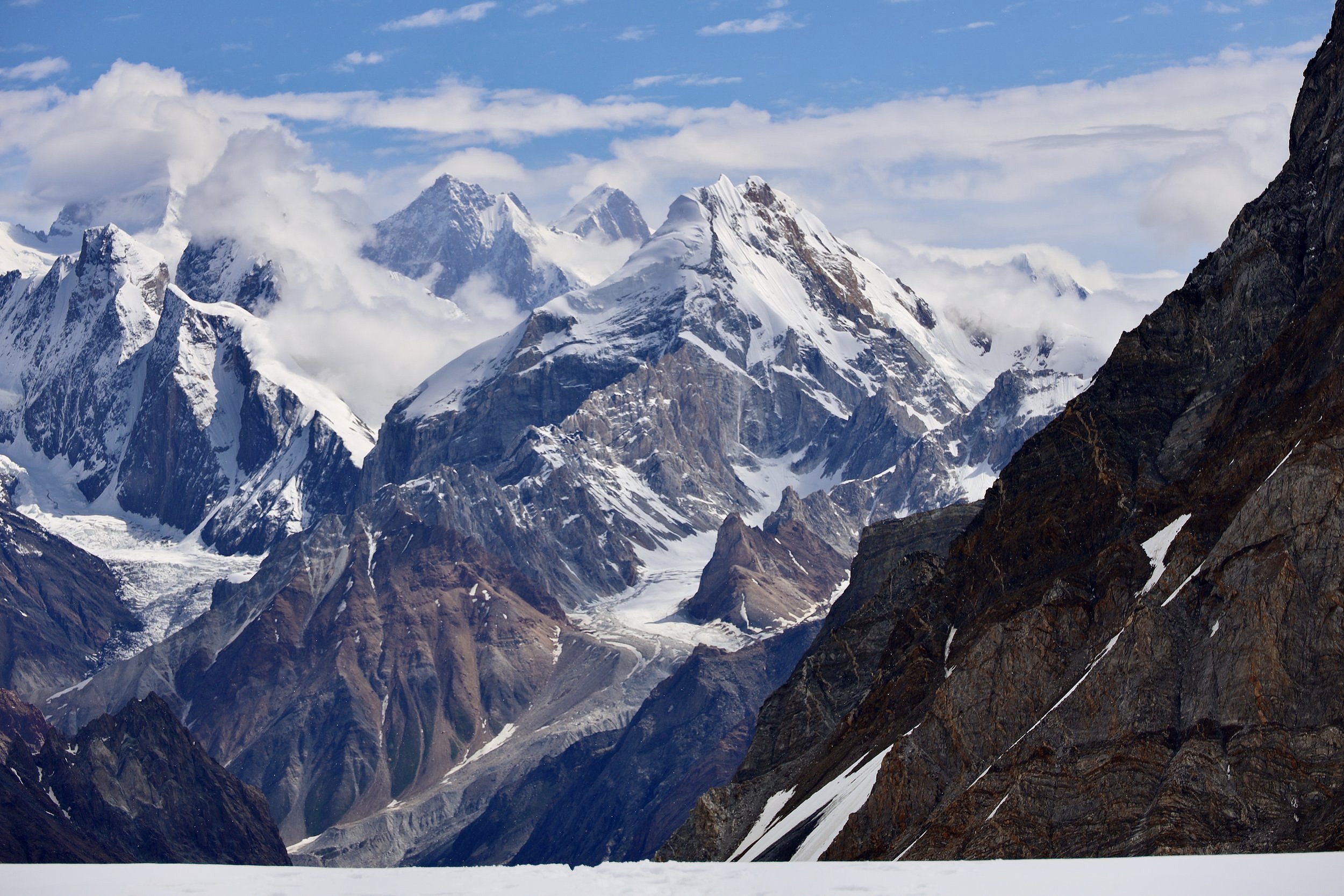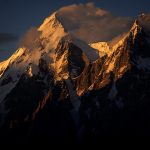Nestled in the Karakoram Range of Gilgit-Baltistan, Pakistan, Haramosh Peak (7,409 meters) stands as a majestic giant, offering breathtaking views and challenging trails. Known for its beauty and difficulty, this peak has captured the hearts of adventurers worldwide. Whether you are a trekker or a seasoned climber, Haramosh Peak promises a once-in-a-lifetime experience.
Why Haramosh Peak Stands Out
- Located near the Rakaposhi massif and Haramosh Glacier.
- Offers diverse climbing routes, from easy treks to technical climbs.
- A lesser-explored gem, making it perfect for adventure seekers.
Routes to Haramosh Peak
1. The Easiest Route: Haramosh La Trek
- Starting Point: Sassi Village near Gilgit.
- Difficulty Level: Moderate.
- Key Features:
- Stunning views of the Haramosh Glacier.
- Requires basic trekking skills and glacier navigation.
- Tips for Trekkers:
- Use proper trekking poles for stability.
- Wear waterproof hiking boots for slippery glacier surfaces.
2. The Haramosh Glacier Route
- Starting Point: Barchi Village.
- Difficulty Level: High.
- Key Features:
- Traverses the Haramosh Glacier and scenic Kutwal Lake.
- Demands expertise in glacier travel.
- Risks to Watch For:
- Hidden crevasses.
- Falling ice and unpredictable weather.
3. The Western Ridge Route
- Starting Point: Haramosh Base Camp.
- Difficulty Level: Advanced.
- Key Features:
- Offers breathtaking views of neighboring peaks.
- Requires technical climbing skills.
- Challenges:
- Sudden storms.
- Exposed ridges.
4. The Most Dangerous: South Face Route
- Starting Point: Haramosh Village.
- Difficulty Level: Extreme.
- Key Features:
- Vertical rock walls and icy slopes.
- High risk of avalanches and rockfalls.
- Advice for Climbers:
- Ensure advanced climbing equipment.
- Always climb with an experienced team.
A Case Study: A Harrowing Expedition

In 1978, an international climbing team attempted the South Face of Haramosh Peak. Despite thorough preparation, they faced numerous challenges:
- Severe snowstorms slowed their progress.
- An avalanche narrowly missed the team, highlighting the route’s danger.
- Two climbers eventually summited, marking a significant achievement.
Key Takeaways from the Expedition:
- Teamwork and preparation are crucial.
- Respect the unpredictable nature of high-altitude mountains.
Tips for Climbing Haramosh Peak
- Preparation:
- Train for high-altitude conditions.
- Practice glacier navigation and technical climbing skills.
- Gear Essentials:
- Crampons, ropes, and harnesses.
- Avalanche beacons and emergency supplies.
- Acclimatization:
- Spend several days at base camps to adapt.
- Stay hydrated and avoid rapid ascents.
- Hiring a Guide:
- Experienced local guides know the terrain and weather patterns.
- Weather Monitoring:
- Keep track of weather updates to avoid storms.
Dangers of Haramosh Peak
- Unstable Terrain: Prone to avalanches and rockfalls.
- Hidden Glacier Hazards: Crevasses and melting ice.
- Altitude Sickness: Common without proper acclimatization.
- Extreme Weather: Sudden storms and freezing temperatures.
Why Visit Haramosh Peak?
- Experience the untouched beauty of the Karakoram Range.
- Witness stunning views of glaciers, lakes, and neighboring peaks.
- Test your skills on one of the most challenging mountains.
Helpful Tips for Trekking and Climbing
- Trekking Tips:
- Use lightweight gear to minimize fatigue.
- Travel with a group for safety.
- Climbing Tips:
- Practice rescue techniques before the expedition.
- Use weather-resistant clothing to combat extreme cold.
- General Tips:
- Respect the mountain by leaving no waste behind.
- Carry a map and GPS for navigation.
The best time to visit Haramosh Peak is between May and September. During this period:
- Weather Conditions: The weather is relatively stable with clear skies, making it ideal for trekking and climbing.
- Snow Levels: Snow begins to melt in the lower regions, making access routes safer and easier to navigate.
- Visibility: The breathtaking views of the surrounding peaks and glaciers are more prominent during these months.
- Temperature: Daytime temperatures are manageable, though nights can still be cold, especially at higher altitudes.
If you’re planning to climb or trek, ensure you monitor weather updates, as conditions in the Karakoram Range can change rapidly even during peak season.
Conclusion
Haramosh Peak is more than just a mountain; it’s a journey of discovery, resilience, and awe. Whether you’re captivated by its beauty or eager to conquer its heights, this peak offers an unparalleled experience. However, it demands respect and preparation to navigate its challenges safely. From stunning routes to thrilling climbs, Haramosh Peak stands as a testament to nature’s grandeur and humanity’s indomitable spirit.
FAQs
1. What is the best time to visit Haramosh Peak?
The best time is between May and September, when the weather is relatively stable.
2. Do I need a permit to climb Haramosh Peak?
Yes, climbers must obtain special permits from Gilgit-Baltistan authorities.
3. Are there beginner-friendly routes on Haramosh Peak?
Trekking routes like Haramosh La are suitable for beginners, but summiting requires advanced skills.
4. What should I pack for a Haramosh expedition?
Essential gear includes climbing equipment, warm clothing, and emergency supplies.
5. Can I trek Haramosh Peak solo?
It’s not recommended due to the risks involved. Hiring a guide is highly advised.


